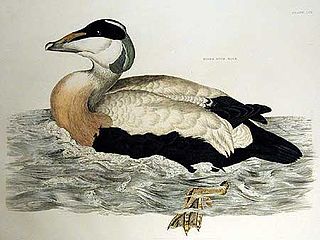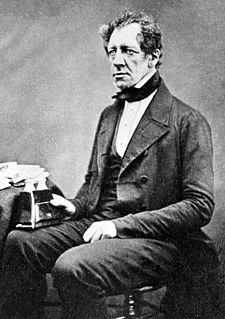
John Gould was an English ornithologist. He published a number of monographs on birds, illustrated by plates produced by his wife, Elizabeth Gould, and several other artists, including Edward Lear, Henry Constantine Richter, Joseph Wolf and William Matthew Hart. He has been considered the father of bird study in Australia and the Gould League in Australia is named after him. His identification of the birds now nicknamed "Darwin's finches" played a role in the inception of Darwin's theory of evolution by natural selection. Gould's work is referenced in Charles Darwin's book, On the Origin of Species.
William Elford Leach, MD, FRS was an English zoologist and marine biologist.

Robert Swinhoe FRS was an English diplomat and naturalist who worked as a Consul in Formosa. He catalogued many Southeast Asian birds, and several, such as Swinhoe's pheasant, are named after him.

Prideaux John Selby FRSE FLS was an English ornithologist, botanist and natural history artist.

World Museum is a large museum in Liverpool, England which has extensive collections covering archaeology, ethnology and the natural and physical sciences. Special attractions include the Natural History Centre and a planetarium. Entry to the museum is free. The museum is part of National Museums Liverpool.

Long Ashton is a village and civil parish in Somerset, England. It falls within the unitary authority of North Somerset and is one of a number of large villages just outside the boundary of city of Bristol urban area. The parish has a population of 6,044. The parish includes the hamlet of Yanley, and the residential area of Leigh Woods.

Sir William Henry Flower was an English surgeon, museum curator and comparative anatomist, who became a leading authority on mammals and especially on the primate brain. He supported Thomas Henry Huxley in an important controversy with Richard Owen about the human brain and eventually succeeded Owen as Director of the Natural History Museum in London.

Ashton Court is a mansion house and estate to the west of Bristol in England. Although the estate lies mainly in North Somerset, it is owned by the City of Bristol. The mansion and stables are a Grade I listed building. Other structures on the estate are also listed.

Natural history in India has a long heritage with a recorded history going back to the Vedas. Natural history research in early times included the broad fields of palaeontology, zoology and botany. These studies would today be considered under field of ecology but in former times, such research was undertaken mainly by amateurs, often physicians, civil servants and army officers.

Francis Walker was an English entomologist. He was born in Southgate, London, on 31 July 1809 and died at Wanstead, England on 5 October 1874. He was one of the most prolific authors in entomology, and stirred controversy during his later life as his publications resulted in a huge number of junior synonyms.

Henry John Elwes, FRS was a British botanist, entomologist, author, lepidopterist, collector and traveller who became renowned for collecting specimens of lilies during trips to the Himalaya and Korea. He was one of the first group of 60 people to receive the Victoria Medal of the Royal Horticultural Society in 1897. Author of Monograph of the Genus Lilium (1880), and The Trees of Great Britain & Ireland (1906–1913) with Augustine Henry, as well as numerous articles, he left a collection of 30,000 butterfly specimens to the Natural History Museum, including 11,370 specimens of Palaearctic butterflies.

Francis Talbot Day was an army surgeon and naturalist in the Madras Presidency who later became the Inspector-General of Fisheries in India and Burma. A pioneer ichthyologist, he described more than three hundred fishes in the two-volume work on The Fishes of India. He also wrote the fish volumes of the Fauna of British India series. He was also responsible for the introduction of trout into the Nilgiri hills, for which he received a medal from the French Societe d'Acclimatation. Many of his fish specimens are distributed across museums with only a small fraction deposited in the British Museum, an anomaly caused by a prolonged conflict with Albert Günther, the keeper of zoology there.

The English city of Bristol has a number of parks and public open spaces.

Bower Ashton is a small district in south west Bristol on the western boundary with North Somerset, lying within the Southville ward, approximately two miles from the city centre. Ashton Court estate, a 850-acre (3.4 km2) recreational area owned by Bristol City Council lies just to the north, the Long Ashton by-pass to the south and the River Avon to the east.
There have been a number of creations of baronets with the surname Smith.

There have been six baronetcies created for persons with the surname Smyth, two in the Baronetage of England, one in the Baronetage of Great Britain, one in the Baronetage of Ireland and two in the Baronetage of the United Kingdom. One creation is extant as of 2010.

Sir Richard Owen was an English biologist, comparative anatomist and paleontologist. Despite being a controversial figure, Owen is generally considered to have been an outstanding naturalist with a remarkable gift for interpreting fossils.
The High Sheriff of Westmeath was the British Crown's judicial representative in County Westmeath, Ireland from its creation under The Counties of Meath and Westmeath Act 1543 until 1922, when the office was abolished in the new Free State and replaced by the office of Westmeath County Sheriff. The sheriff had judicial, electoral, ceremonial and administrative functions and executed High Court Writs. In 1908, an Order in Council made the Lord-Lieutenant the Sovereign's prime representative in a county and reduced the High Sheriff's precedence. However the sheriff retained his responsibilities for the preservation of law and order in the county. The usual procedure for appointing the sheriff from 1660 onwards was that three persons were nominated at the beginning of each year from the county and the Lord Lieutenant then appointed his choice as High Sheriff for the remainder of the year. Often the other nominees were appointed as under-sheriffs. Sometimes a sheriff did not fulfil his entire term through death or other event and another sheriff was then appointed for the remainder of the year. The dates given hereunder are the dates of appointment. The following is an incomplete list: all addresses are in County Westmeath unless stated otherwise.
Léon Joseph Henry Humblot was a French naturalist and botanical collector.
Wraxall Court is a historic building in Wraxall in the English county of Somerset. It is a Grade II listed building.














